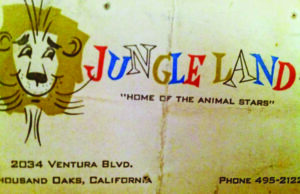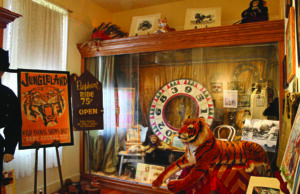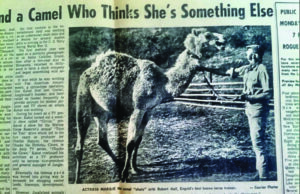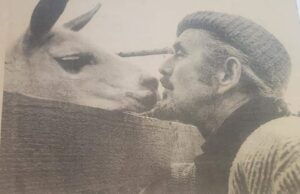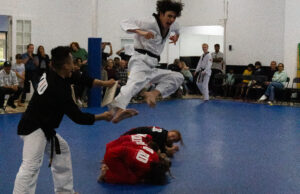Relive the history of Newbury Park
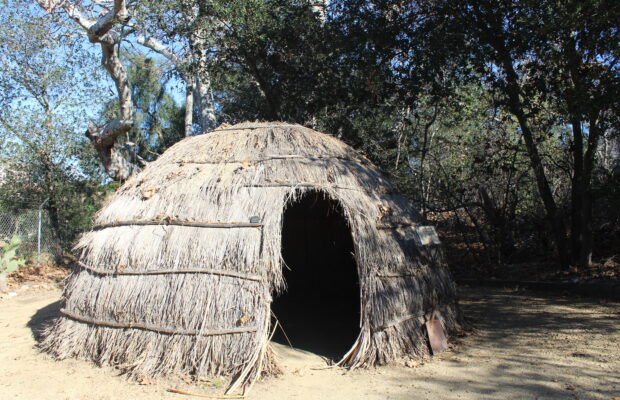
Newbury Park is a beautiful area filled with culture and history, as well as a place that 37 thousand people call home. Newbury Park is filled with historical families that originated here, and it is important to consider those that lived here in the past, and created the area we all know and love. Some of Newbury Park’s most historically-rich sites are places the public may not know much about. Specifically, the Stagecoach Inn Museum, The Native American Indian Culture Center, and the existence of Jungleland serve as reminders of the culture and history of our town. These people and events in the past paved the way for many people today.
Satwiwa
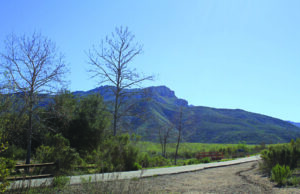
One of the most historically-rich sites in Newbury Park is Satwiwa. This National Recreation Area is home to many wild animals, and has natural trails available to the public. However, Satwiwa also has historical value, as the area was home to Native American tribes thousands of years ago.
Satwiwa is part of the Santa Monica Mountains National Recreation Area, which was established in the late 1970s. However, Satwiwa itself was not established as a Culture Center National Park until 1980.
Anna Flores, a Park Guide intern at the Recreation Area, has been working at the center for a year and a half. “What’s interesting about this park is that it’s an urban park,” Flores said. An urban park is a natural area that is in close proximity to urbanized land where humans live. “Because we live in the area that we do, you cross the street and you have neighborhoods…We’re surrounded by neighborhoods, freeways, things that affect wildlife.”
Before the land transferred officially into the ownership of the National Park Service, it was home to many Native American tribes including the Chumash, the Tongva and the Tataviam. Today, descendants of these tribes still live in Newbury Park and educate the public about their culture and history through weekend workshops at the Native American Indian Culture Center, located about a fourth mile down the main trailhead at Satwiwa.
The Native American Indian Culture Center serves as a small museum for the public as well as to host events and workshops. “We have either Chumash, Tongva or Tahitian elders come in, or of other tribes come in and they share their artistry,” Flores said.
Alan Salazar, a member and descendant of the Tataviam tribe, explained that tribes such as the Tataviam and Chumash have been in the area for over 13 thousand years, and their culture has survived through horrific times of oppression. “We survived the Mission Period, which was extremely brutal. We were considered subhuman,” Salazar said. “Half of our population did not survive the Mission Period, and many of that half were babies and young children.”
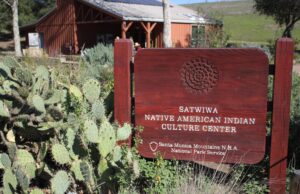 Many places in or near Newbury Park have a tragic history of slavery and abuse of Native American people. “There was a slave labor market in downtown Los Angeles,” Salazar said. “Almost every day in the 1850s and 60s in early California history.”
Many places in or near Newbury Park have a tragic history of slavery and abuse of Native American people. “There was a slave labor market in downtown Los Angeles,” Salazar said. “Almost every day in the 1850s and 60s in early California history.”
However, the tribes that have undergone abuse in the past have survived and their culture is still present today. “By 1900, we were almost extinct…But today, both Chumash and the Fernandeno Tataviam have made a tremendous comeback,” Salazar said.
Satwiwa is a place that could be considered the heart of Newbury Park, because of its beauty and tragic history. “We [Native Americans] have been involved with California history longer than anyone else. We are California. We are California history. US history is just a small anecdote. That’s all it is,” Salazar said. “Native Americans are the most important and have the most in depth connection to the land. No one can deny that.”
Stagecoach Inn
In 1876, the Stagecoach Inn, originally named the Grand Union Hotel, opened up in Newbury Park where the 101 freeway is on Ventu Park today. As time passed, the Grand Union Hotel transformed into a number of different businesses and became the center of the early Thousand Oaks community. After the landmark was relocated to the intersection of Ventu Park and Lynn for the building of the 101, the Grand Union Hotel became the Stagecoach Inn Museum, which serves to preserve the history of what the hotel was like along with the past of Newbury Park. However, the museum has its own rich history that is vital to understanding Newbury Park.
Jana Goldsworthy, the Stagecoach Inn Museum Director, works under the Conejo Valley Historical Society to preserve the history of the museum. “The Conejo Valley Historical Society formed in order to move the building, which is no small feat with a building this size, but they moved it here onto donated land,” Goldsworthy said. “Now, this land is owned by CRPD, the Conejo Recreation and Park District, and we manage the museum, but the idea was to move the structure and reopen it as a museum.”
However, years after the building was relocated, a fire burnt the entire Stagecoach Inn down to the ground, leaving nothing salvageable. Stasia Simrall, a museum docent, recounts this history to all of the visitors at the museum.“ It burned down in less than 30 minutes, and nobody ever figured out where it started because it burned so fast…After the fire, they had to tear everything down,” Simrall said.
Once the building was burnt down, the whole museum had to be replaced with new furnishings. “Everything you see in [the museum] is antique. These are not reproductions. Local families have donated [artifacts and antiques] after the fire because all the original furnishings burned out,” Simrall said.
Also located at the Stagecoach Inn Museum is a reconstruction of the Timber School. As of right now, it is under repair. “[The] Timber s]School was the original school in the area…[At that time] when they had…[about] 17 children in the area, they decided it was time for school,” Goldsworthy said.
This reconstruction was, in fact, made by NPHS students. “The Newbury Park High School’s [woodshop] students are the ones that built it under supervision from an expert, but it was [the] students that supplied the labor,” Goldsworthy said.
Similarly to how the original Stagecoach Inn served as a hotel for the people of the town to congregate, the modern museum tries its best to uphold those original values. “Today, as a museum, it still continues to be a place for gathering and presenting things about the city. We’re the number one historic landmark for Thousand Oaks… It’s a cornerstone of the community if you will,” Goldsworthy said.
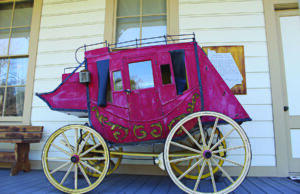
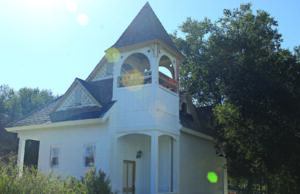
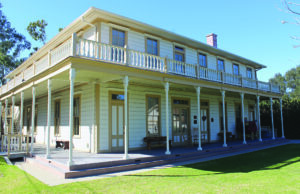
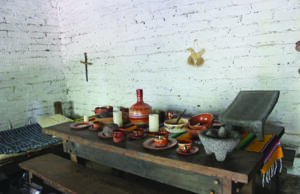
Jungleland
Hidden within the museum, the Stagecoach Inn features a glorious display on Jungleland, one of the most hidden gems in the history of Thousand Oaks. Alice Stewart, a Stagecoach Inn docent, gave us an inside look at Jungleland, the famous animal theme park run by Louis and Kathleen Goebel at the center of Thousand Oaks. The Goebels purchased the 170-acre property off of Ventura Boulevard for only 50 dollars and converted it into a full-functioning zoo with exotic animals, performers and daily shows. “Between 1920 and the middle of 1950s, this was the main attraction, this was a huge attraction. People came from all over the place to go to Jungleland,” said Stewart.
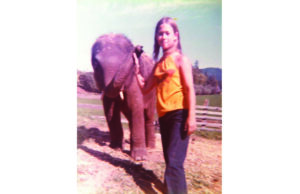
Goebel hired several professional trainers such as Robert Hall, who managed the animals and performed shows with them at the zoo. Suzie Hall, Robert’s daughter, grew up on the Jungleland property with her father, and told stories of her surreal childhood living amongst the animals. “The learning experience was amazing,” Suzie Hall said. “He taught me about animals and the respect for animals… your dog eats before you do or your horse eats before you do and you always put them first,” Suzie Hall said.
Jungleland held some of the most famous animal actors in Hollywood, who were featured in movies such as Dr. Doolittle, Tarzan and Bedtime for Bonzo. The trainers taught animals like Deedee the Chimp to perform a variety of tricks for shows and films. “[Deedee] was amazing. And she would go to TV shows and stuff, she smoked a cigarette, she would give you kisses. You’d say Deedee Give me a kiss…you’d purse your lips and she’d purse her lips and you’d kiss each other,” Suzie Hall said. Even Leo the MGM lion, one of the most famous lions in entertainment, lived and performed at the zoo. “1924 is when they first recorded the famous roar for the MGM lion that you still see today and hear his famous roar,” Stewart said. Leo was a star across Ventura County and was elected marshall of the Conejo Valley Days Parade.
Jungleland was not only home to animal stars, but also to many celebrities and acrobats. Several circus companies such as the Ringling Brothers resided at the Jungleland complex during the winter. Fred Nuesca, an acrobat, would put on shows at the park. “When we were performing, it wasn’t unusual to hear the lion’s roar or something like that,” Nuesca said.
Jungleland was also home to the renowned animal trainer Mabel Stark, who tamed and took care of the tigers at Jungleland. “She was the only woman in the United States that was a tiger trainer. And at the peak of her career, she could have up to 17 tigers in the cage with her at the same time,” Nuesca said.
However, the thrill of Jungleland couldn’t last forever, and the park closed due to bankruptcy in 1969. The land was later converted into the Civic Arts Plaza area, but its historic legacy still impacts Newbury Park today. This includes the famous story of Dynamite, a panther at Jungleland who escaped and caused chaos amongst the town. Although she was found shortly after, The escapee panther became a celebrity of Thousand Oaks and is now our very own mascot of Newbury Park High School.
